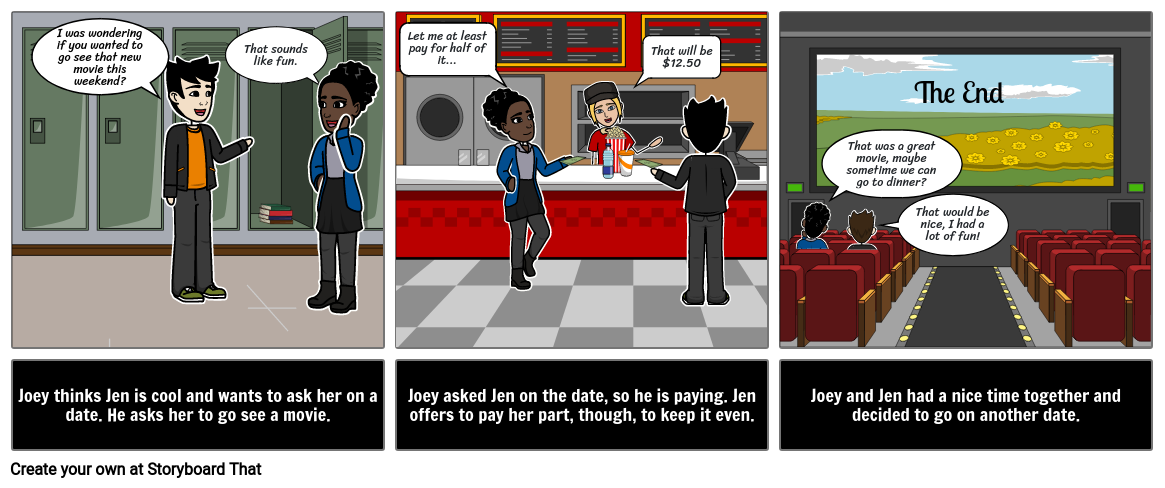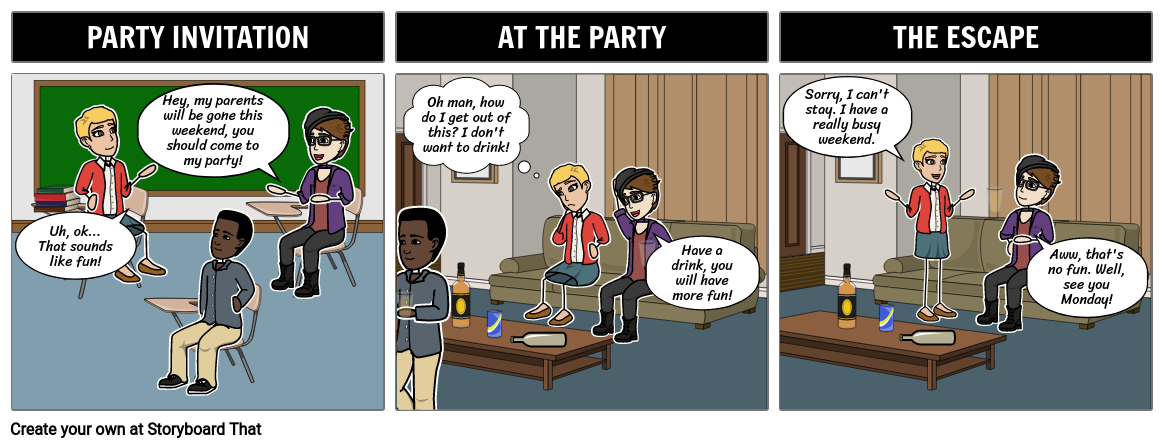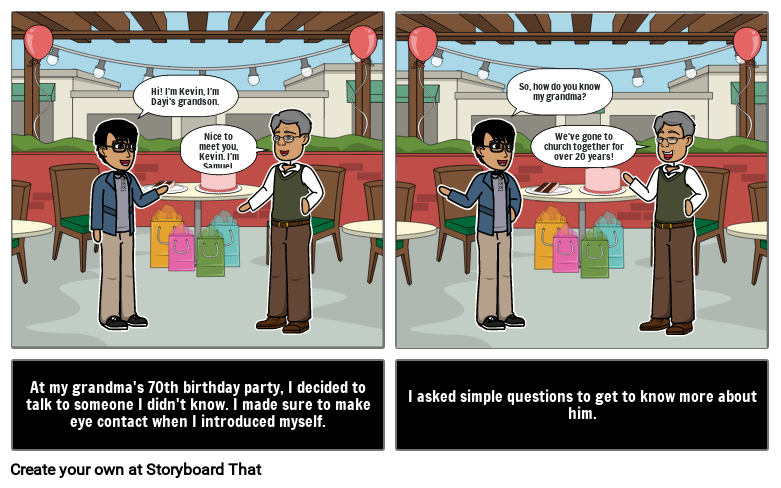Introduction to Social Sketches for Teenagers
Social stories for teenagers can be helpful tools to learn important skills and navigate complex social situations. The teenage years present numerous social challenges that can be overwhelming for many learners, including neurotypical high school students. However, older students with autism or ADHD may find it even more perplexing to navigate social rules and expectations that may seem natural to others.
Social stories for teenagers and autism little learners offer a valuable solution by providing structured narratives that help reduce social anxiety, boost self-esteem, develop coping strategies, and develop essential teenagers social skills. These stories serve as effective tools to address different situations and various social scenarios for teens and provide guidance on appropriate behaviors and responses.
Why Teens Need Social Stories
The teenage years present countless social scenarios that some learners find overwhelming or confusing without guidance. Here are some reasons why they are great for teens and children of all ages:
- Improved Social Understanding: They explain clear and concrete examples of social scenarios, helping teenagers understand the expectations and norms associated with various interactions. This can lead to improved social understanding and awareness of appropriate behaviors in various social scenarios.
- Reduced Social Anxiety: Teenagers with autism or social anxiety often experience heightened anxiety in social situations. Social stories, including autism social scripts can help alleviate anxiety by providing a structured and predictable framework for understanding and navigating social scenarios.
- Enhanced Self-Confidence: By familiarizing themselves with social expectations and appropriate responses through a story for teenagers, teenagers can feel more confident when engaging in social interactions.
- Improved Problem-Solving Skills: Through reading and discussing these stories, teenagers can develop problem-solving skills and learn to consider various perspectives and outcomes. This can contribute to their ability to navigate conflicts, as well as engage in effective conflict scenarios for teens.
- Increased Empathy and Perspective-Taking: Social stories often incorporate characters with different thoughts, feelings, and perspectives. By engaging with these narratives, teenagers can develop empathy and practice perspective-taking, which are essential skills for building positive relationships. This is particularly important for skills for teens with autism.
- Generalization of Skills: These stories can help teenagers apply learned skills across different contexts and settings. By understanding the underlying principles and strategies presented in the stories, teenagers can transfer their knowledge to real-life situations. This can be further reinforced through engaging in social skills activities for teenagers with autism.
- Promotion of Independence: Social stories provide teenagers with a sense of agency and autonomy in navigating social scenarios. By equipping them with the necessary skills and strategies, they promote independence and empower teenagers to handle social situations with increasing confidence.
By incorporating social stories into the lives of teenagers, especially those with autism or learning differences, we can support their social development and help them acquire the necessary list of social skills for teenagers to thrive in various social settings.
Common Social Situations for Teens and How to Navigate Them
Teens often find themselves in various social situations that can be both exciting and challenging. To help them navigate these encounters effectively, social stories can be a valuable tool. Here are some common social situations for teens and how these stories can assist in managing them:
Going on a Job Interview
Job interviews require impression management skills. A narrative highlights professional attire, making eye contact, having relevant questions prepared, and following up properly. This helps reduce anxiety around employment conversations. Social stories can break down the interview process into smaller, manageable chunks, covering topics such as:
- Greeting the interviewer politely
- Asking thoughtful question
- Handling job offers gracefully
- Coping with rejection
- Learning from interview experiences for future opportunities
Asking Someone on a Date
Asking someone on a date can feel intimidating for teenagers. A social story can provide a step-by-step approach, guiding them in building the confidence to initiate the conversation, suggesting a specific date idea, and responding. An example story can provide guidance on breaking it down into smaller, manageable steps, including:
- Building confidence
- Initiating the conversation
- Suggesting a specific date idea
- Responding graciously to various answers
Being Offered Alcohol or Drugs
Peer pressure and offers of substances are common challenges for teenagers. These stories can assist in recognizing peer pressure, practicing polite refusals when offered substances, and suggesting alternative activities to maintain social connections. It can also assist by breaking down the situation into manageable components, such as:
- Recognizing peer pressure
- Saying "no" respectfully
- Offering alternative activities
- Nurturing healthy friendships
Joining a School Club
Joining after-school clubs is an excellent way for teenagers to expand their social circles and explore leadership opportunities. Social stories can guide them in observing a club meeting, identifying shared interests, and approaching the club's leadership to inquire about joining. A story can illustrate how to approach this process, covering:
- Observing a club meeting
- Talking to the club president
- Becoming an active member
Chatting at a Party
Social gatherings and parties require specific skills. A narrative can guide teenagers by breaking the process into smaller, actionable components, such as:
- Initiating conversations
- Polite and respectful interaction
- Graceful excusing
Working on a Group Project
Collaborating on group projects demands effective communication and teamwork. Stories can break down the process into manageable steps, such as:
- Project planning and task delegation
- Learning to compromise
- Communicate respectfully
- Acknowledge the efforts of their peers
Greeting Adults at a Gathering
Interacting with unfamiliar adults can develop a teenager's confidence and poise. Social stories can guide them in starting interactions with a smile, making eye contact, offering a polite handshake, and initiating conversations by asking simple questions. A story can demonstrate the process, covering:
- Starting with a positive introduction
- Initiating conversations
How to Craft Effective Social Stories for Teens
Crafting impactful these stories requires some planning and attention to detail. Follow these steps to create narratives that resonate with teenage learners:
- Identify the Social Skill or Situation: Brainstorm specific skills your teen wishes to develop, such as starting conversations, dealing with confrontation, or managing stress.
- Gather Relevant Details: Note setting, individuals involved, behaviors expected, potential responses, and desired outcomes. Interview your teen to learn their perspective.
- Adopt Your Teen's Point of View: Refer to "I" and "me" instead of your teen's name when writing from their first-person perspective. This promotes empathy.
- Keep Language Simple and Straightforward: Use short, concrete sentences teens can easily understand. Avoid ambiguity, sarcasm or idioms which could confuse.
- Integrate Interests: Mention favorite activities, books, movies or role models within stories whenever possible. Link skills to innate motivations.
- Add Illustrations: Snap photos related to the story setting and characters. Sketch or find basic clip art depicting key details. Visuals aid comprehension.
- Review Structure: Each story should have an introduction, body and conclusion. Guide your teen through the sequence of events step-by-step.
- Emphasize a Positive Tone: Focus narratives on appropriate, successful behaviors rather than what to avoid. End with optimism to boost self-efficacy.
- Personalize for Your Teen: Customize stories to real-life contexts and people in their world. Details should feel tailored, not too generic.
- Practice Enacting Stories: Role play scenarios with your teen so they can embody characters and experience flows of interaction firsthand.
With care and dedication to these principles, impactful stories can be crafted to benefit teenagers on the autism spectrum. Build skills through engaging, personally relevant narratives.
Developing social skills is crucial for teenagers, especially those with autism or other learning differences. Social stories provide a valuable tool to teach and reinforce appropriate behaviors and responses in various social situations. With continued support and guidance, we can foster the social development of autistic teenagers and help them thrive in their personal and academic lives as young adults.
Incorporating the Social Stories
Starting a conversation about some of the adolescent-related social situations may be awkward. The story can act as the conversation starter itself. Teenagers will look at it and it is almost guaranteed that someone will have a comment or question. This allows the students to initially guide the conversation. As the moderator, it will be easy to figure out what they may or may not already know about the topic and take the conversation in the necessary direction. This approach can be helpful in maintaining their interest in the conversation as well.
Adolescence can be a difficult age group to teach social situations to. Storyboarding allows for a fun, yet age-appropriate representation of adolescent scenarios. The ever-growing library of scenes and categories on Storyboard That also allows for a wider range of situations to cover the needs of the users.
More Examples
If you are new to social stories, please read our introduction to social stories that covers the basics of and how to make effective examples.
For a closer look, please see all of our social story articles:
| Article | Description | Topics |
|---|---|---|
| Daily Living Skills | Some individuals require explicit instruction on tasks that many of us take for granted. Make a personalized social story to engage the learner. |
|
| Transitions and Unexpected Events | The unknown is scary for everyone, but unexpected events and transitions can be particularly stressful for individuals with ASD. Help prepare your student or loved one for upcoming changes with a social story. |
|
| Social Situations | Social interactions can be very stressful for many people, with and without ASD. Make storyboards to show possible situations and outcomes. |
|
| Adolescent Skills | As kids get older, their interests and needs change. Brooch potentially difficult conversations with a storyboard example. |
|
| Social Stories in the Classroom | Social stories are also useful for whole group direct instruction of social and coping skills. Use a storyboard to address issues with both individuals and the class. |
|
| Social Stories for Young Children | Young children often struggle with new concepts or big changes. Create a social story to help prepare even very young children for change or new skills. |
|
How to Embed Social Stories in the Curriculum
Identify Relevant Social Skills
Identify the specific social skills or behaviors that you want to address in your curriculum. Determine the key areas where students may benefit from social stories, such as communication, empathy, conflict resolution, or self-regulation.
Design Social Stories
Create social stories that target the identified social skills. Develop narratives that are relatable to your students and present the desired behaviors in a clear and positive manner. Use age-appropriate language and include visual elements to enhance understanding.
Determine Appropriate Integration Points
Identify opportunities within your curriculum where the social stories can be integrated effectively. Look for natural connections between the targeted social skills and the subject matter or activities. Consider both explicit and implicit ways to incorporate the stories.
Introduce Social Stories
Introduce the social stories to your students within the designated curriculum context. Provide a brief explanation of the purpose and relevance of the story. Engage students in reading or discussing the story together, allowing for questions and clarifications.
Reinforce and Practice
Reinforce the social skills presented in the social stories through various activities and exercises. Provide opportunities for students to practice and apply the targeted behaviors in real-life situations. Offer guidance, feedback, and support during these practice sessions.
Reflect and Evaluate
Facilitate reflection and evaluation of the effectiveness of the embedded social stories. Encourage students to discuss their experiences, share any challenges or successes, and reflect on their growth in the targeted social skills. Make adjustments to the integration and implementation as needed.
Frequently Asked Questions about Social Stories for Teens
What is a social story?
It is a short, simple narrative that describes a social situation, skill, or concept. It is designed to help individuals understand and navigate social interactions.
How do social stories benefit teens?
They can help teens with social and communication difficulties by providing clear explanations and expectations for various social situations. They promote understanding and reduce anxiety in social settings.
Can social stories be used for addressing bullying or peer conflicts?
Yes, they can be tailored to address issues such as bullying, conflict resolution, and appropriate ways to respond to negative behavior. They provide a framework for understanding and responding to social challenges.
How do I introduce social stories to a teenager?
Introduce them in a positive and non-judgmental way. Emphasize that they are tools to help understand social situations better and improve communication skills. It can be helpful to involve the teen in creating or customizing their own.
© 2024 - Clever Prototypes, LLC - All rights reserved.
StoryboardThat is a trademark of Clever Prototypes, LLC, and Registered in U.S. Patent and Trademark Office









